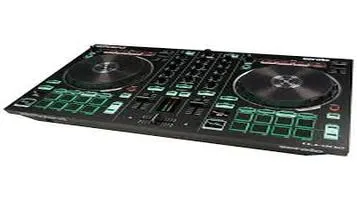Review about Vintage Sideboards
Vintage sideboards are timeless pieces of furniture that add character and charm to any space. Typically crafted between the early 20th century and the late 1970s, these sideboards often feature exquisite craftsmanship and materials like solid wood, metal accents, and intricate detailing. Their designs vary from the ornate and decorative styles of the Victorian and Edwardian eras to the sleek and minimalist lines of mid-century modern aesthetics. Vintage sideboards serve both functional and decorative purposes, providing ample storage with drawers, cabinets, and sometimes open shelving, ideal for dining room essentials or living room decor. Their unique patina and aged finishes tell a story of past eras, making them a cherished addition to homes that appreciate history and style.

Design and Aesthetic Appeal
One of the most compelling aspects of vintage sideboards is their design. These pieces often hail from periods when craftsmanship was paramount, and this is evident in their construction. From the ornate carvings of Victorian-era sideboards to the sleek, minimalist lines of mid-century modern designs, vintage sideboards offer a wide range of styles to suit various tastes.
Victorian sideboards, for instance, are often grand and elaborate, featuring intricate woodwork, brass handles, and rich, dark finishes. These pieces can serve as a statement piece in a room, drawing the eye and adding a layer of sophistication and history. On the other hand, mid-century modern sideboards are characterized by their clean lines, functional form, and use of materials like teak and walnut. These pieces are perfect for those who appreciate a more understated, yet equally stylish, aesthetic.
What makes vintage sideboards particularly appealing is their uniqueness. Unlike mass-produced furniture, each vintage piece has its own story, its own set of imperfections and idiosyncrasies that give it character. This individuality can make a vintage sideboard a focal point in a room, a conversation starter, and a cherished heirloom.
Functionality and Versatility
Beyond their aesthetic appeal, vintage sideboards are incredibly functional. Originally designed to store dining essentials such as china, silverware, and linens, these pieces often feature a combination of drawers, cabinets, and sometimes even hidden compartments. This makes them versatile storage solutions that can be used in various rooms throughout the home.
In the dining room, a vintage sideboard can serve its traditional purpose, providing a stylish way to store and display dinnerware and serving pieces. It can also double as a buffet during gatherings, offering a convenient surface for food and drinks. In the living room, a vintage sideboard can be used to house electronics, books, or decorative items, adding both storage and style to the space. Some people even repurpose vintage sideboards as unique bathroom vanities or entryway consoles, showcasing their adaptability.
The quality of construction in vintage sideboards often surpasses that of modern furniture. Many vintage pieces were built to last, crafted from solid wood and assembled with techniques that have stood the test of time. This durability means that a well-maintained vintage sideboard can continue to serve its purpose for many years, making it a smart investment.
Emotional and Historical Resonance
Owning a vintage sideboard is not just about acquiring a piece of furniture; it’s about connecting with history. Each sideboard carries with it the echoes of the past, the stories of the people who owned and used it before. This historical resonance can add a profound sense of continuity and nostalgia to a home.
For some, a vintage sideboard may be a family heirloom, passed down through generations, imbued with personal history and sentimental value. For others, it may be a carefully chosen piece that reflects a love of a particular design period or an appreciation for the craftsmanship of the past. In either case, a vintage sideboard can evoke a sense of nostalgia and connection, enriching the emotional landscape of a home.
Environmental Considerations
In today’s world, where sustainability and environmental consciousness are increasingly important, choosing vintage furniture is also an eco-friendly option. By purchasing a vintage sideboard, you are essentially recycling, giving new life to a piece that might otherwise end up in a landfill. This reduces the demand for new furniture production, which in turn can lessen the environmental impact associated with manufacturing and transportation.
Furthermore, the longevity of vintage furniture means that it does not need to be replaced as frequently as lower-quality, mass-produced items. This durability makes vintage sideboards a sustainable choice for those looking to furnish their homes responsibly.
Conclusion
In summary, vintage sideboards offer a unique blend of aesthetic appeal, functionality, and historical significance. Their diverse designs cater to a range of tastes, from the opulent to the minimalist, while their sturdy construction ensures they remain functional and durable. The emotional resonance and sustainability of these pieces further enhance their appeal, making them a valuable addition to any home.
Whether you are a seasoned collector or someone looking to add a touch of vintage charm to your decor, a vintage sideboard is a versatile and timeless choice. These pieces not only serve practical purposes but also enrich the spaces they occupy with their unique stories and enduring beauty.






